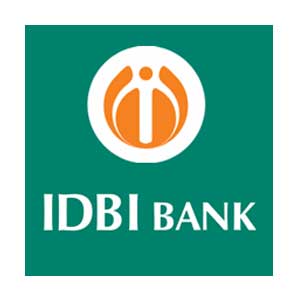
IDBI Executives Recruitment 2020 - Syllabus and Exam Pattern
IDBI Executives recruitment notification 2020 will be released in the first week of April 2020. If you are interested in appearing for the exam, you must have a clear understanding of the syllabus as well as the exam pattern. Here we are providing the complete details of IDBI Executive Syllabus and Exam Pattern. The syllabus is provided with the respective weightage provided to the topics. Read the complete article for detailed information.
IDBI Executives Recruitment 2020 - Exam Pattern
The exam will be of 90 minutes duration and the questions will be asked from the following sections:
|
Name of Tests |
Number of Questions |
|
Test of Reasoning |
50 |
|
Test of English Language |
50 |
|
Test of Quantitative Aptitude |
50 |
Scroll left or right to view full table
Except for the test of English language, all the tests will be in both Hindi and English languages. Each question will be of 1 mark and 0.25 marks will be deducted for every incorrect response. So, candidates are advised to marks the responses carefully. The test is conducted through online mode and all questions are of Multiple Choice Type.
IDBI Executives Recruitment 2020 - Syllabus
Syllabus for Reasoning
|
Topics |
Number of Questions (Approximation) |
|
Mathematical Inequalities |
5 |
|
Coding-Decoding |
3 to 5 |
|
Syllogism |
5 |
|
Seating Arrangement |
4 to 5 |
|
Input-Output |
5 |
|
Blood Relations |
3 to 5 |
|
Ordering & Ranking |
2 to 4 |
|
Arrangement & Pattern |
3 to 5 |
|
Directions & Distance |
1 to 3 |
|
Non-Verbal Reasoning (statements & interference, statements & conclusions) |
4 |
|
Floor Puzzle |
5 |
Scroll left or right to view full table
Syllabus for the English Language
|
Topics |
Number of Questions (Approximation) |
|
Reading Comprehension |
10 to 12 |
|
Vocabulary (error spotting, cloze test, phrase replacement) |
5 to 10 |
|
Grammar (phrase replacement, error spotting, etc.) |
5 to 10 |
|
Verbal Ability (para jumbles) |
5 |
Scroll left or right to view full table
Syllabus for Quantitative Aptitude
|
Topics |
Number of Questions (Approximation) |
|
Simplification |
10 |
|
Data Interpretation (Bar graph, Line graph, Pie Chart, Tabulation) |
4 to 5 |
|
Algebra (Linear Equations, Quadratic Equation, Polynomials) |
4 to 6 |
|
Average |
1 |
|
Mixtures & Alligations |
1 |
|
Ratio & Proportion |
1 |
|
Permutation & Combination |
1 to 3 |
|
Probability |
1 |
|
Mensuration |
1 |
|
Speed, Time & Distance |
1 to 3 |
|
Interest (Simple and Compound) |
2 to 3 |
|
Proft & Loss |
4 to 6 |
|
Data Sufficiency |
5 |
|
Number System (LCM, HCF, Divisibility, Remainders) |
3 |
|
Time & Work (Work Efficiency, Work & Wages) |
2 to 3 |
Scroll left or right to view full table
Candidates must now start their preparation if they haven’t. Daily practice is the key to get a strong grip on syllabus topics. Referring to the previous years’ question papers will also help in exam preparation. Solve as many sample papers as you can. Sample papers are easily available in the market. Stick the syllabus at your study desk and make a study plan today.

0 Comments